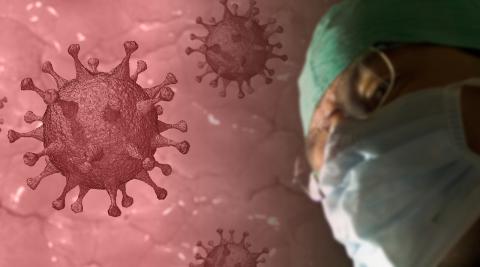What will happen with COVID-19 in Autumn-Winter 2021 / 22?

The extent of COVID-19 cases, hospitalisations & deaths over winter 2021/22 crucially depends on the extent of waning immunity and behaviour changes such as return-to-work, new modelling work from JUNIPER consortium has shown.
Two reports published last week by SAGE from JUNIPER consortium members at the University of Bristol and University of Warwick looked at the potential impact of COVID-19 over the coming autumn-winter period using two different epidemiology modelling approaches.
Are Future Infection Peaks Possible?The report from the University of Warwick summarises possible COVID-19 epidemic trajectories into the start of 2022 under a number of different scenarios. The scenarios consider three key uncertainties that are likely to impact infection dynamics: wanning vaccine efficacy and the action of boosters, how rapidly behaviour changes return to pre-pandemic levels of social contacts, and seasonality.
This modelling work showed that future waves of infection are possible, although promisingly most of the scenarios considered project a slow decline in hospital admissions and deaths throughout the remainder of 2021. Under the more pessimistic scenarios that the observed decline in vaccine efficacy continues, the Warwick model suggests there could be large-scale waves of hospital admissions in the first half of 2022. Boosters given to younger age groups or additional boosters to older age groups to maintain high efficacy could help to mitigate such a situation.
Under the most optimistic scenario, where vaccine efficacies remain at a high asymptomatic level of protection, the model projects there will be a continual decline in hospital admissions between now and June 2022. Changes in behaviour and how quickly social mixing patterns return to pre-pandemic levels can also impact the size and timings of potential epidemic waves, with a more gradual return to ‘normal’ social mixing pushing epidemic waves to the latter part of 2022.
Professor Matt Keeling:
“Further waves of infection cannot be excluded and there remains considerable uncertainty about the long-term dynamics of COVID-19”
The report from the Bristol group took an alternative approach, using the Social Contact Survey (SCS) data and ONS modelled antibody prevalence to estimate possible reproduction numbers as well as total numbers of cases and deaths for autumn/winter 2021/22 under a number of different scenarios. This framework, termed the “Ready Reckoner”, was initially developed by the group to estimate the impact of different social distancing measures on the effective COVID-19 reproduction number. While such an approach cannot capture the epidemic profile (including the peak burden of cases) it provides a useful framework to understand the potential impact of different measures, such as vaccinating children.
This work extended a previous version, using ONS modelled antibody prevalence to capture immunity from natural infection,vaccination and waning protection instead of explicitly modelling vaccine rollout. This was the baseline scenario, with three further scenarios applied sequentially: a booster programme, vaccinating 12 to 15 year-olds with a 65% uptake and a vaccine escape variant of concern resulting in a 20% drop in protective immunity in the population. The potential impact of return-to-work was also included by switching on and off a proportion of social contacts.
Assuming R0=7, under a full return to pre-COVID social mixing patterns with no additional security measures in place (e.g. face coverings) the Bristol model estimates there would be a total number of cases between 5.7 million and 6.3 million and the number of deaths would be between 7,500 and 9,100. They estimate that a booster programme would reduce the number of deaths to between 5,200-6,300 while vaccinating 12 to 15 year-olds is estimated to reduce the number of deaths to 3,200-3,800. The emergence of a vaccine escape variant of concern has the potential to massively increase the reproduction number and number of cases with a 20% reduction in protection estimated to lead to up to 100,00 more deaths than the baseline scenario. The Bristol approach also highlights that retaining some level of working from home can potentially reduce the reproduction number to less than 1 and would result in many fewer cases and deaths. Retaining some levels of COVID-security (e.g. face coverings) and contact tracing can also reduce the reproduction number of total number of deaths.
Monitoring long term vaccine efficacy is keyThese two independent approaches both show that the pandemic is far from over, and additional measures may be required to ensure that infection levels over the winter do not place too much pressure on the healthcare system. They also highlight that long term reduction in vaccine efficacy, either due to waning of immunity or the emergence of a vaccine escape variant of concern, would have a significant impact on how bad things may get this winter. Therefore, vigilance over the coming months will be critical, with data sources on if and when vaccinated people become infected vital to provide crucial early warning signs.
If you want more information on the mathematical approaches behind this work, check out this explainer from Plus magazine on the Warwick model here and on the Bristol 'ready-reckoner' method here.
